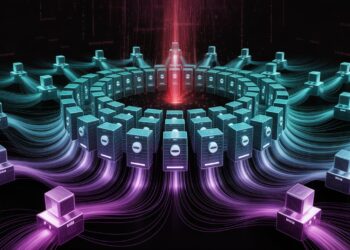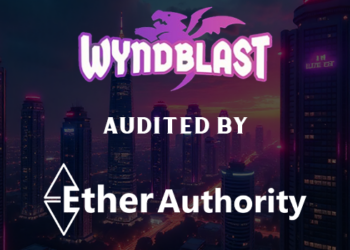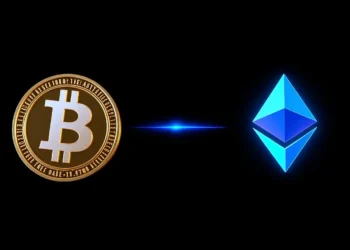Introduction
Imagine a world where money, insurance, or even voting happens without middlemen—thanks to blockchain and smart contracts. These digital contracts automatically do what they say, but they need outside info to work right. That’s where blockchain oracles come in—serving as the bridge between digital agreements and real-world data. As blockchain grows, so does the need for secure, trustworthy oracles. Without them, smart contracts can’t do much beyond on-chain info.
What Are Blockchain Oracles?
Definition and Purpose
A blockchain oracle is a service that feeds external data to smart contracts. Think of it like a translator or messenger, bringing news from outside the blockchain world into the contract’s language. This enables smart contracts to trigger actions based on real-world events—like the weather turning rainy or a stock price hitting a specific number.
Types of Blockchain Oracles
- Software Oracles: These deliver digital data from websites, APIs, or online sources. Example: a price feed for a cryptocurrency.
- Hardware Oracles: These bring information from the physical world, such as sensors or barcode scanners. Example: a sensor confirming soil moisture for agriculture.
- Inbound Oracles: They bring data into smart contracts. For example, timing weather data for crop insurance.
- Outbound Oracles: They send data from smart contracts out into real-world systems, like triggering a payment.
Why Are Oracles Critical for Blockchain?
Oracles unlock the full potential of blockchain tech. They let dApps tap into real-world info, expanding use cases like decentralized finance (DeFi), insurance, supply management, and gaming. Without oracles, smart contracts are stuck with just on-chain data, limiting what they can do.
How Do Blockchain Oracles Work?
Architecture and Components
- Data source: The original info, such as a weather website or sensor.
- Oracle provider: The service that collects, verifies, and sends data.
- Smart contract interface: The smart contract that receives and processes data.
- Data validation: Ensuring the incoming info is accurate before it’s used.
Data Transmission Methods
- Pull model: The smart contract requests data when needed.
- Push model: The oracle automatically sends updates to the contract.
- Consensus among multiple oracles: Several oracles verify data together, reducing errors.
Ensuring Data Reliability
- Data aggregation: Combining info from many sources for accuracy.
- Reputation systems: Tracking oracle performance so worse actors are ignored.
- Cryptographic proofs: Using advanced tech like zk-SNARKs, which verify data without revealing sensitive info.
Types of Blockchain Oracles and Their Use Cases
Centralized Oracles
These depend on a single source for data. While easier to set up, they pose risks—what if the source is wrong or malicious? A typical example is Provable, which used a trusted source to feed data.
Decentralized Oracles
Using multiple sources, these oracles aim to cut down on problems caused by relying on just one. For example, Chainlink gathers data from many sources, then combines it to ensure accuracy and trust. This approach reduces risks of fraud or errors.
Hybrid Approaches
Some projects mix both methods, adding robustness. They’re useful where high reliability is needed but complete decentralization isn’t practical.
Practical Use Cases
- Price feeds: Platforms like Uniswap and Aave rely on oracles to get reliable cryptocurrency prices.
- Insurance: Confirming external events, like weather or accidents, to pay claims quickly.
- Gaming and prediction markets: Updating scores or odds in real time for fair play.
Challenges and Risks of Blockchain Oracles
Security Vulnerabilities
Oracles are prime targets for hacking. Fake data or interrupted feeds could cause huge errors. The Parity wallet bug exposes how attacks on smart contracts can lead to lost funds.
Centralization Risks
When a single source controls data, it can be manipulated or censored—defeating the purpose of decentralization. Trusting one oracle can open up vulnerabilities.
Data Accuracy and Reliability
Even reputable sources can go offline or provide wrong info. This makes it crucial to validate data before acting on it.
Future Challenges
As blockchain solutions grow, oracles need to handle more diverse data types and larger scale operations. Scalability and security must keep pace with demand.
Future Trends and Innovations in Blockchain Oracles
Multi-Source Data Aggregation
Using many data sources and consensus methods makes information more reliable. It’s like a panel of judges ensuring fairness.
Privacy-Preserving Oracles
Zero-knowledge proofs (like zk-SNARKs) enable data to stay private while still verifiable. That’s handy for sensitive info like medical or financial data.
Interoperability and Cross-Chain Oracles
Connecting different blockchains so they share data seamlessly is a hot trend. Cross-chain projects are building bridges for data and value transfer between chains.
Regulatory and Compliance Developments
Global rules around data security and privacy are shaping how oracles operate. Standards are emerging, pushing providers to follow strict security protocols.
Conclusion
Blockchain oracles are the backbone of smart contracts that need real-world info. They expand blockchain’s reach far beyond just data stored on-chain. Selecting the right oracle depends on your security needs, decentralization goals, and use case. Developers should evaluate how oracles verify data, consider multi-source models, and stay aware of potential risks. Oracles will continue to evolve, unlocking new possibilities for blockchain to seamlessly connect with the world outside. Embracing this technology can help your project thrive in today’s connected digital future.
Join Us : Twitter | Website | GitHub | Telegram | Facebook | YouTube

























